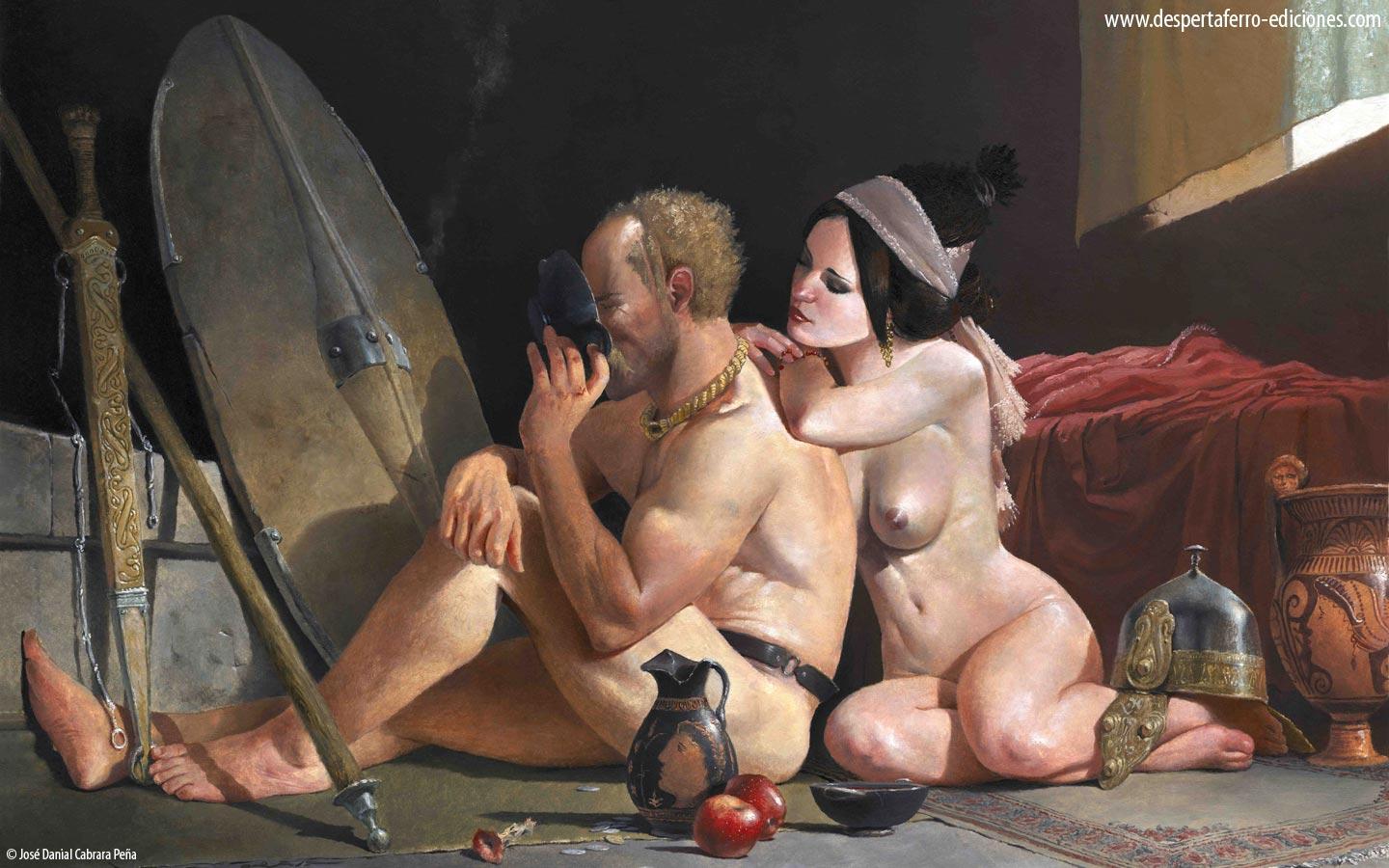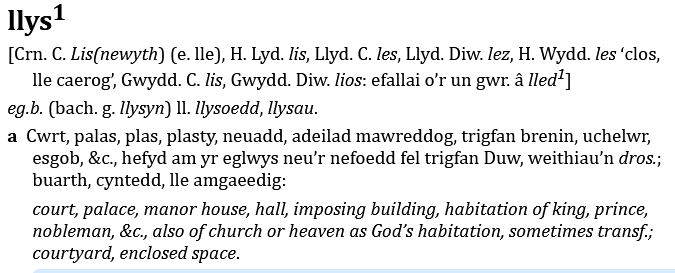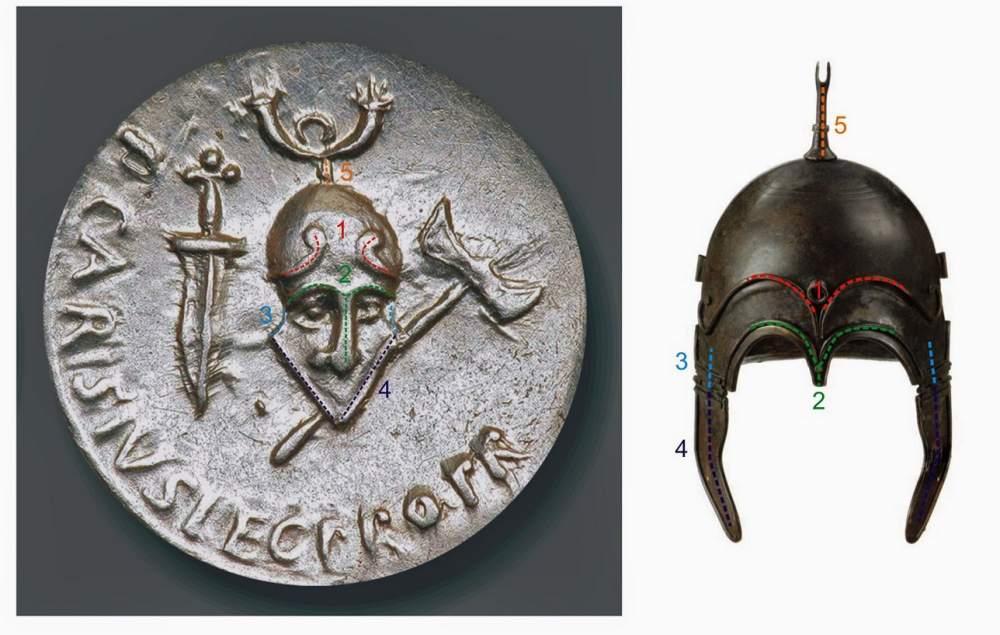-
Posts
2.379 -
Joined
-
Last visited
-
Days Won
80
Everything posted by Genava55
-
Yeah, to give a bit more context on the matter, the problem is more general with the bipennis, not only related to the Cantabrians. Silus Italicus is not the most reliable author and the bipennis itself is a well-known artistic figure in Roman poetry. Furthermore, the bipennis is also a big issue concerning the Franks and the Goths in literal descriptions, Romans and Christians authors describe those Germanic people fighting and throwing with bipennis axes. While it is 100% certain that it is wrong, the archaeological records clearly and indisputably shows exclusively single-headed axes. The problem is also visible in Tacitus, Agricola, when he describes the shape of Britain. For him, it has the shape of a bipennis or of a scutula. This is really misleading because those are two different objects with different shapes. On the matter, we must admit that ancient authors are particularly unreliable and unintelligent. Bipennis and securis are simply catch-all terms. Personally on the matter, I see the double-headed axe as a very unpractical weapon. There is no benefit at all to a second blade for the battlefield. It simply increases the weight for nothing, and it is contrary to the general process observed in ALL cultures using dedicated battle-axes, which is to reduce the weight of the axehead to increase the balance. This is why I am curious to see a real archaeological find of a plausible double-headed battle-axe, because if it is the case it should have a design much lighter than those generally depicted. Exactly, probably the same situation in Greek and Thracian cultures, where the Labrys is a religious tool (sacrifice) and a votive item. The bipennis could be also items used by chieftains as authority symbols. We saw this trend in bronze age culture a bit everywhere in Europe. This is a bit the issue with wargaming culture and reenactment. We want to see differences and uniqueness. History is much more boring in the academic sphere than it is in the popular media.
-
I think it should be nice to have an option for swapping them. Some people prefer ancient names, other prefer modern names. This is a dividing topic.
-
Actually it makes sense in Celtic culture that a flat yard/court is a place of authority or justice. It seems to be the way it worked for assembly as well. In the case of modern Breton, it seems that the word lez is synonym to court and lord house or palace. Wikitionary gave two examples from literature: Disprijet o deus lez ar roue, hag en em gavet int en lez an nenv. + En em gavet dirak lez ar roue Grallon, hemañ, o klevout an trouz a oa, a ya ivez da sellout, e vercʼh Ahez en e gichen. Another Breton dictionary give the same meaning: https://geriafurch.bzh/fr?q=lez&d=brfr Welsh: https://glosbe.com/cy/en/llys https://welsh-dictionary.ac.uk/gpc/gpc.html You can make it simpler and choose one if you prefer. Thank you for opening the thread, this is really useful. I will not oppose your choices, this is fine for me to letting you the hand on the matter. I can only participate to share point of view and information, and debate a bit. But you are in a better position for choosing. If it is possible to have different names for the Britons and Gauls it would be great but only if it is not a pain in the...
-
Which is actually much much much much more complicated when you know the context of Gallo-Roman trophees. It could be. But natives used Roman stuff HEAVILY, this makes everything difficult and Romans don't build tropaion for their enemies but for themselves, for a Roman leader generally. So it could mix a lot of things together.
-
Obviously the Greeks are in the best position with their multiples colonies (Massalia, Emporion, Alonis, Taras, Cyrene, Odessos, Istros, Sinope etc.) and their explorers (Pytheas, Megasthenes, Euthymenes, Colaeus etc.).
-
.thumb.jpg.b21ca1d0c15fb56b42c39b25a0a40815.jpg)
Others RTS - Discuss / Analysis
Genava55 replied to Lion.Kanzen's topic in Introductions & Off-Topic Discussion
Incredible what some modders are able to do -
The topic is nearly the same with early Gallo-Roman monuments where we can find masked helmets alongside Gallic stuff (but also Roman stuff): Although it is really difficult at that time to assess if the representation are natives or Romans. Actually this uprising brow is something you would observe on Italic and Hellenistic helmets.
-
https://www.facebook.com/departement57/videos/244413320272646/ 10000000_275031830723555_1110700475503094151_n.mp4
- 264 replies
-
- britons
- east celtic
-
(and 2 more)
Tagged with:
-
.thumb.jpg.b21ca1d0c15fb56b42c39b25a0a40815.jpg)
Lusitanians and extreme tactics
Genava55 replied to soloooy0's topic in Introductions & Off-Topic Discussion
Strabo put the Astures in the same group with the Galicians and the Cantabrians, saying they have the same custom. Probably they are an intermediate step between both, an ancient Indo-European culture being Celtized by Celtiberian culture as well. -
Furthermore, some civs like the Mauryas and the Han (if they are added) have relied much less on slavery. Serfdom was more important. Indeed, an interesting topic. It could have a rising price on the market in relation with their numbers in game and any assault on the opposite player could result in a lower price for the current player.
-
Yeah I think it is a bit too early for a poll. It will depend on the content of the changelogs. It is nice to have a list of the proposals although.
-
The conquest of Britannia by the Romans is probably out of frame (excepted if you include the Roman Empire lol). Although there is an account from Caesar that the Suessiones had power over a large area including a part of Britannia during the reign of their king Diuiciacos (Diviciacus), 1st century BC. There is also the short campaign of Caesar in the British Isles (but the problem is the actual Romans are depicting Punic Wars, although it could be easily corrected for a campaign). Else, there is the journey of Pytheas of Massalia. It could be a really beautiful way to introduce the game to new players through a tutorial.
-
Because there was multiple alpha with modern languages, like "Ides of March" instead of Idus Martiae, Osiris instead of ꜣsjr, Argonauts instead of Αργοναῦται. I don't think double standards should be a rule suddenly. Furthermore, technically the ancient Britons DON'T have any writing system, so you are asking an impossible task since the alpha relies on an alphabetical character. But on the matter of the word Ynys itself, yes I believe it was mostly pronounced the same way by ancient Britons since the pronunciation is mostly the same in Old Celtic languages and that the reconstructed proto-Celtic is something like this in IPA /ɨˈnˑɨs/ while in modern Welsh it is /ˈənɨ̞s/. So if we consider that the pronunciation is mostly the same, I see no issues. Edit: Finally, Ynys Môn is an interesting historical reference https://en.wikipedia.org/wiki/Roman_conquest_of_Anglesey
-
Yes, Ynys is basically meaning island in modern Welsh. Inis is from old Welsh and old Irish. The name Mona is given by Roman accounts. I am glad you like the song, this is an excellent band.
-
Ysbaddaden, a giant of Welsh mythology. Yr Wyddfa, a famous mountain in Wales. Ynys Môn, an island called Anglesey in English, a place where there was a sanctuary and famous for the massacre perpetrated by the Romans on this island. https://en.wikipedia.org/wiki/Roman_conquest_of_Anglesey In case the Britons got their re-work.
-
Channel dedicated to the study of Ancient History, with particular interest in the martial field, through a multidisciplinary approach in which the study of sources and the analysis of finds are combined with experimental archeology. All the videos are in Italian but numerous videos include some English subtitles. Gioal Canestrelli is a serious guy with some academic background and a reenactor: https://www.ibs.it/libri/autori/gioal-canestrelli https://independent.academia.edu/GioalCanestrelli
-
To discuss further this priest issue I consider important as well, the copy from AoE2 is really an issue, I agree on this matter. Maybe the game should include a whole system related to priests and religion. Maybe a system of rituals enabled in a temple to give a specific bonus or anything else. But really, the priest and religion are wasted aspects. Edit: if I recall, Ancestors legacy had some tech bonus related to religion, it was really basic although.
-
The original Iberians in 0ad seems to have been designed on purpose from both the Celtiberians and the Iberians. Maybe a unique gameplay mech should be to branch two civs with the Iberians and letting the player choose during the game at some point. This is not totally historical but if it is clear and transparent I don't see the issue. Besides this, I agree with @av93 remarks.
-
I suspect the El Argar origin but I am not sure. I don't think anyone can retrieve the original justifications for this. Anyway, if it's this, this is really a double-standard and inconsistent.
-
The problem is that those justifications are probably incorrect from a historical point of view.







